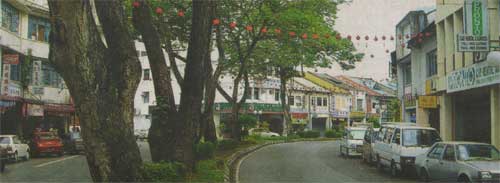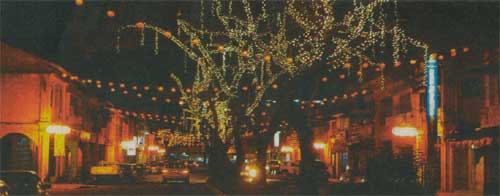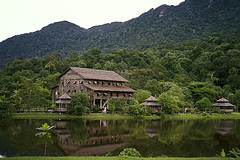 Kucing Padungan Road information
Kucing Padungan Road information
|
After a day's shopping in Kuching's Main Bazaar, HEIDI MUNAN@malaxi recommends you head for Padungan Road where chic new cafes have sprouted up alongside traditional coffee shops If you're hungry in Kuching go east! The average visitor to Sarawak 's charming riverside capital settles down in one of the town's major hotels, and walks westward, upriver, in search of the deservedly famous Main Bazaar. Main Bazaar is where it's at if you're in search of art, crafts, souvenirs, antiques and all that goes with the genre. The wilder fringes of Borneo are represented by tattooing parlours with encouraging names like 'Headhunters'. Don't say you haven't been warned! You (an shop till you drop in Kuching's Main Bazaar. Shopping makes people hur% There are a few coffeeshops on It Main Bazaar, but the savvy gourmet is discovering another newer venue that's bursting with food. They look east, towards Paclungan Road .
The way to the suburb of Padungan, east of the main town, was opened to major traffic: bicycles, rickshaws, buffalo carts, and the town's half dozen motorcars. A whiff of the 20s still hangs over Padungan. Unlike the Old Town area, this suburb was planned with an eye to the future. Tall trees shade a double road, ridiculously wide for the day and age, but exactly what we need in the 21 st Century. The business people who built their shophouses along the elegant new Padungan Road had just enjoyed the rubber boom which followed World War I and the rise of the motorcar; they were prepared to spend a bit of money on their premises. Padungan Road abounds in decorative facades, rooftop ornaments, mansard gardens and stucco everywhere. A walk down this historical road should be undertaken slowly, with frequent stops to admire the gracious buildings. At the eastern end of the road is an extra bonus for snap happy visitors - the Great Cat of Kuching, picturesquely backed by an ersatz City Gate. But it you're hungry, the main interest will lie in what is in the buildings. A number of chic new eateries (and waterholes) have sprung up along this road, due east of the major hotels.
What To Eat The town's best crispy chicken and lacquered duck are sold in Padungan. These are all old, established shops with a regular clientele, customers who sip coffee and thumb through the day's newspaper while fans whirr overhead. Some evenings they bring along fiddles and flutes and perform impromptu concerts, By and large, these outlets look and act like coffeeshops - waiters in rubber slippers, a coffee maker behind brass pots, marble topped tables and a big Do Not Spit sign on the wall, They serve breakfast and lunch for the early birds. They uphold the proud coffee shop tradition of Kuching. But what's new in Padungan, and very welcome to locals and visitors alike, are the new restaurants that serve up western style grills, sandwiches and snacks, 101 varieties of coffee, with patisserie, macaroons, desserts - you name it.
What's In A Name Lifestyle Galleries, Food Depots... and even as I'm writing this, a few new ones have opened their arty doors to tastefully decorated interiors and choice food and drink. These new outlets open late into the night, catering to the party crowd that either likes to sit around and sip something, or drop in for a hearty snack on the way home from a happening elsewhere.
|
|




 One of the many new cafe in Padungan
One of the many new cafe in Padungan Coffee in Padungan
Coffee in Padungan 